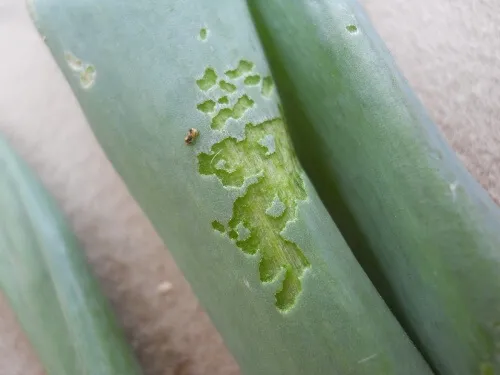
External feeding on hollow leaves (Figure 1)
Leek moth will not feed on the outer layer of hollow leaves like this onion; this is not leek moth damage.
Figure 1: Feeding damage on outside layer of onion leaf done by salt marsh caterpillar; NOT LEEK MOTH. Photo: Amy Ivy, Cornell University.
A good check is to split open hollow leaves and look for debris and frass. If inside is clean, leek moth was not there. Check inside folds of flat leaves such as garlic. Exception: they do damage the outer layer of garlic scapes.
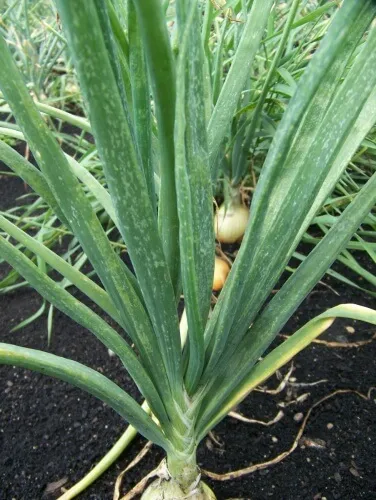
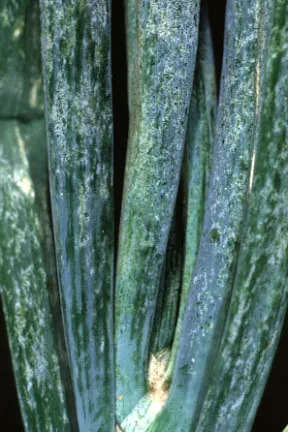
Thrips (Figure 2 & 3)
Onion thrips are tiny and create shorter, more numerous whitened patches on leaves. They are hard to see with the naked eye, and are a very common pest of onions.
Figure 2: Onion Thrips damage. Photo: Christy Hoepting, Cornell University.
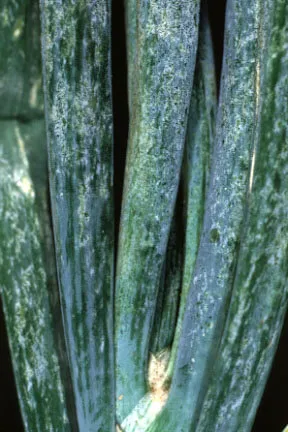
Figure 3: Onion Thrips damage close-up. Photo: Christy Hoepting, Cornell University.
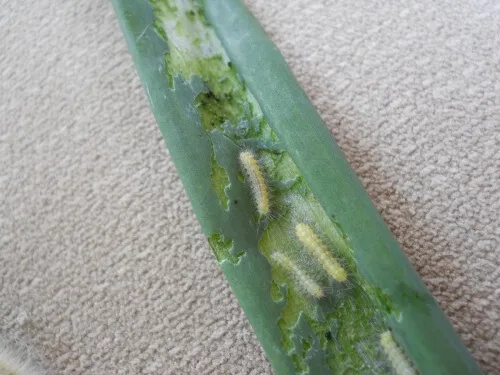
Salt marsh caterpillar (Figure 4)
These caterpillars are very hairy, even when tiny, and feed on the outside of the leaf. They are only occasional pests and tend to appear in spots in masses, causing localized damage. They are easy to control by simply crushing.
Figure 4: Salt Marsh Caterpillars feeding on outside of onion leaf. Noticeably more hairy than leek moth. Photo: Amy Ivy, Cornell University.
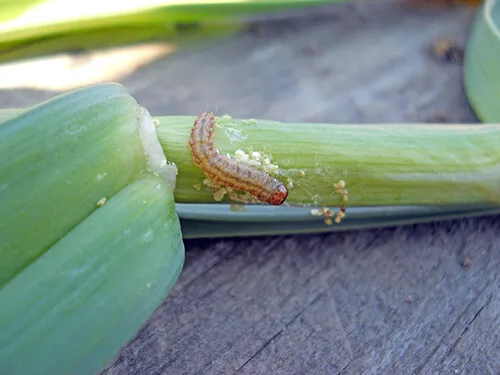
European corn borer (ECB) (Figure 5)
ECB prefers corn but in the spring of 2011 when corn was planted much later than usual due to weather conditions, we found ECB in some garlic, presumably since that was one of the few suitable crops up when the adult ECBs arrived in late May.
Figure 5: European Corn Borer on garlic stem. Photo: Amy Ivy, Cornell University.
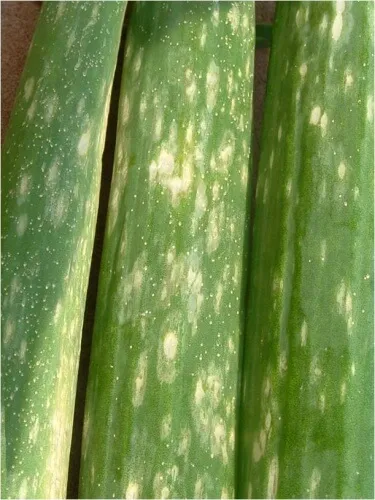
Botrytis leaf blight (Figure 6)
Botrytis leaf blight is a fungus disease on onions favored by wet weather. The lesions resemble leek moth damage but when leaf is split open, the inside is clean with no debris.
Figure 6: Botrytis leaf blight on onions. Photo: Christy Hoepting, Cornell University.
Various diseases also cause white chlorotic spots on onion leaves that can be mistaken for leek moth injury. Split the leaf open and look for the characteristic debris and frass from the leek moth larvae. If the inside of leaf is clean, consider disease as a possibility.
Fact Sheets
- Leek Moth Fact Sheet 2022 (PDF) — University of Vermont Extension
- Leek Moth Fact Sheet 2011 (PDF) — Cornell Cooperative Extension
- Leek Moth — A Pest of Allium Crops (revised August 2009)
Training Materials
- Leek Moth: Background, Biology, and Occurrence
- Powerpoint (5MB File)
- PDF (318K)
- Leek Moth Damage Examples.
- Poster for fairs and/or displays (PDF)
- Poster 2: Leek Moth: A New Invasive Insect Pest of Allium Crops (PDF)